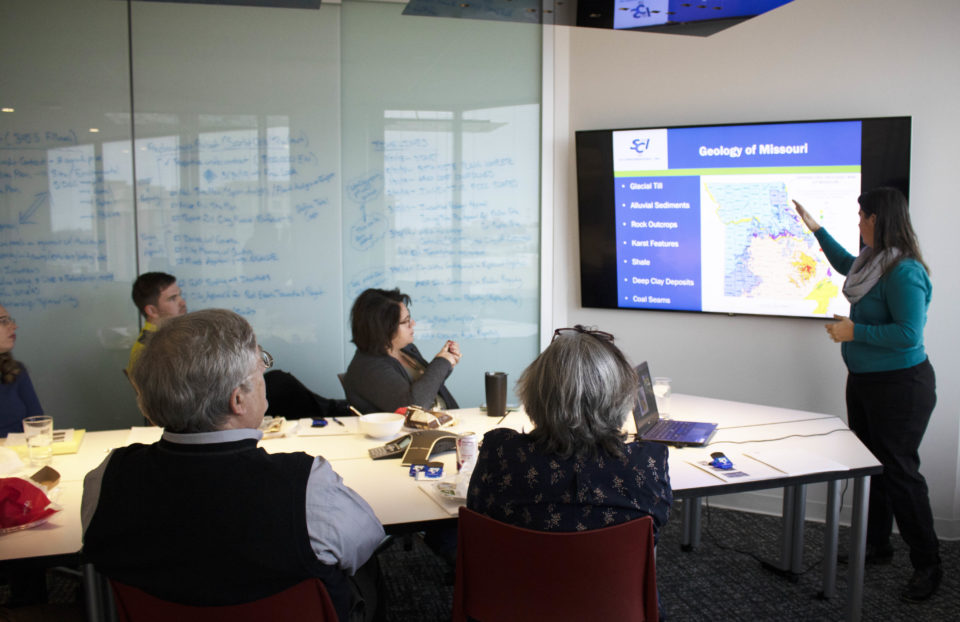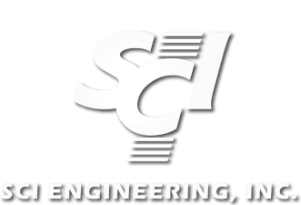Executive Vice President of SCI Engineering, Inc. (SCI), Tony Kreutz is celebrating his 30th year wi...
SCI offers free “Lunch & Learn” presentations to architect and engineering firms, private companies and public sector agencies.
On average, SCI professionals provide more than 70 training sessions per year. The concept is simple – you select a presentation from the list below and the appropriate SCI subject matter expert will come to your office and provide lunch or breakfast, and spend 30 to 45 minutes sharing their knowledge, expertise and experiences with your team. You may also request a customized presentation that can address your specific needs. The most effective sessions are those that are specifically designed for you, our clients. SCI also frequently offers presentations throughout the year at one of our offices in Missouri, Illinois, Colorado and Texas. The Lunch and Learn program is designed to educate participants and provide a comprehensive understanding of the various activities involved with each of our services. The training is designed to qualify for 1.0 Professional Development Hour for Professional Engineers and 1.0 Learning Unit Hour through the American Institute of Architects.

PRESENTATION OVERVIEWS
The following list, while not exhaustive, is a typical list of our more popular presentations. Please let us know if we can schedule a session for you and your staff.
Construction Inspection
Today’s funding environment means at least a percentage of your transportation dollars are probably coming from the Federal Government. With these dollars comes a significant burden on Local Public Agencies to follow a prescribed process from design through construction. During construction, tests, inspections, and documentation which you may have never given a thought to before, may now be mandatory. Proper planning and execution of quality control tests and inspections will help keep the construction running smoothly and keep headaches for you and your staff, as well as the DOT personnel, to a minimum. Ultimately, proper quality control and documentation will mean you are not jeopardizing your federal reimbursement.
Cultural Resource Survey Requirements
The National Historic Preservation Act of 1966 requires that all projects that utilize federal monies, or require a permit from a federal agency, will be subject to a Cultural Resource Survey (CRS). This review process is often referred to as “Section 106”. SCI’s process is a linear progression of stages beginning with the determination of whether or not a CRS is required and ending with the mitigation of any adverse effects to the cultural resources present in the project area.
Due Diligence for Site Development
Various activities are often performed as part of the due diligence process for site development. These activities include performing a subsurface investigation for geotechnical considerations, a wetlands/waters of the United States survey for potential United States Army Corps of Engineers permitting, a Cultural Resource Survey to identify whether a site history or pre-history will be impaired, as well as Environmental Site Assessment for potential petroleum and hazardous substances. Any or all of these considerations are useful in identifying/limiting any unexpected costs that could be incurred for new construction or redevelopment.
Environmental Concerns for Lenders/Site Development
Phase One Environmental Site Assessments are often required to be performed prior to loaning money on a property, but what exactly does that entail? This lunch and learn takes the lender/developer through the Phase One process and explains the types of things that SCI considers to be “red flags” on a property. The so-called “red flags” are items that represent the potential for the presence of petroleum, toxic or hazardous substances, and other concerns that can make development especially difficult and costly. Additionally, key non-scope items are discussed which include asbestos, lead-based paint and mold, all, or a portion of which, are part of various lenders/retailer’s due diligence process.
Geotechnical Advances and Seismic Concerns
The presentation will focus on an introduction to more current advances in Geotechnical explorations techniques including in-situ testing methods. The presentation will also have an in-depth review on the factors that influence the International Building Code Site Class and Seismic Design Criteria determinations. The discussion will include the benefits of performing a Site Specific Seismic Hazard Analysis in order to reduce the Seismic Design Criteria and the seismic loading.
MINE SUBSIDENCE
Abandoned, underground mines pose a significant mine subsidence risk to an area that has seen heavy development. Several options exist for the management of mine subsidence risk, ranging from designing a more resilient structure to implementing a mine mitigation program that fully grouts the mine void. SCI’s geotechnical experts will cover how mine subsidence risk is evaluated and the steps we take to help owners and developers manage that risk.
Mold in Construction
Mold is a naturally occurring life form that is present everywhere. Outdoor air that appears clean and fresh can commonly contain hundreds to tens of thousands of mold spores per cubic meter. The problems begin when mold amplification or advanced mold growth causes unnatural levels of mold spores and mold by-products in our environment. When this occurs, health problems can follow. Construction industry professionals, including architects, property managers, home builders, construction supervisors and customer service representatives for builders will learn about commonly encountered mold problems in new construction, and the causes of mold as well as its prevention and abatement. SCI’s trained experts have experience performing investigations on numerous types of structures.
Slope Stability in Residential / Commercial Construction
Most slope stability issues stem from three main factors: geologic conditions, water, or a change in grades of the slope. In the Midwest, the presence of shale has caused many slope movements and failures which could have been avoided with the proper remedial measures during design and construction. Shale is a layered sedimentary rock and when the shale layers become saturated, they slide on each other causing movement of the slope.
The Importance of Special Inspections
Special inspections are inspections and tests of building components critical to a building’s structural integrity. The demand for special inspections is increasing due to higher design capacities and the city’s desire to increase quality control. Special inspections can help identify defects and deficient work resulting in fewer problems and a dramatic improvement in the quality of construction. The special inspection process is in addition to those inspections conducted by the municipal building inspector and the engineer or architect. SCI’s Special Inspection group works closely with clients to inspect and test the materials used in construction to minimize risks and liabilities. This Lunch & Learn will cover the importance of special inspections and how it pertains to your projects. Required inspections for Concrete, Masonry, Structural Steel and Fireproofing as defined in Chapter 17 of the IBC will be discussed in detail.
Stormwater Regulations and Compliance
The Missouri Department of Natural Resources (MDNR) and the Illinois Environmental Protection Agency (IEPA) require permits for construction sites disturbing more than one acre. Site-specific stormwater pollution prevention plans (SWPPPs) can be developed for sites covered under these general permits. SCI regularly assists developers and contractors with the development and implementation of SWPPPs and SCI is available to conduct the required weekly/storm event site inspections required by the permit. SCI also offers stormwater compliance seminars to clients who wish to provide their personnel with additional training.
STREAMBANK MITIGATION AND STABILIZATION
Through the effective application of hydrologic principles and efficient design and construction techniques, SCI can help to assess the potential for mitigation bank development on a prospective property. Streambank mitigation provides developers, municipalities and other clients an opportunity for a one-time, no-maintenance mitigation option for those who need to meet United States Army Corps of Engineers permitting requirements.
Threatened and Endangered Species Issues
Recent changes in the listing status of Northern long-eared bats and Indiana bats as threatened and endangered under the Endangered Species Act have increased the incidence of tree clearing restrictions and the need for additional field surveys. The emphasis put on regulatory agencies around the St. Louis region to preserve forested areas that host maternity roost colonies may impact tree clearing associated with site development. The Natural Resource Services Group at SCI Engineering provides bat habitat assessments and presence/absence surveys for private development or construction projects, as well as public sector entities. The group is led by an experienced bat biologist working under a Federal Fish and Wildlife Permit. With our close contact and strong relationships with Federal and State regulatory agencies such as the U.S. Fish and Wildlife Service, U.S. Army Corps of Engineers, Missouri Department of Conservation, and Illinois Department of Natural Resources, SCI can navigate complex regulations and inform our clients on potential issues before time and money is spent on a project.
Translating the Geotechnical Report
Understanding the geology of the site plays an important role in developing the correct geotechnical investigation and the risks associated with each site. This geologic information and our understanding of the proposed project is used to develop a scope of services for the project which will provide an understanding of the subsurface conditions and the potential risks a developer or owner may encounter on this site. Once the report is complete, there are a few keys to understanding the report and quickly being able to identify the design recommendations and potential “red flags” associated with the project.
WETLANDS AND WATERBODIES DELINEATION
As part of the due diligence services prior to site development, a survey to identify wetlands and waters of the United States is conducted to identify the need for potential United States Army Corps of Engineers Section 404 permitting. Impacts to wetlands and waterbodies may be able to be minimized by SCI experts through the modification of development plans, eliminating unnecessary permitting effort and expenses. In cases where wetlands and waterbodies cannot be avoided, SCI can provide a liaison between clients and regulatory agencies to make the permitting process as efficient as possible. SCI’s understanding of the permitting process helps limit any unexpected costs or delays that could be incurred for new construction or redevelopment.
NEWS YOU CAN USE

Executive VP Tony Kreutz Celebrates 30th Anniversary

EPA Announces the Navigable Waters Protection Rule
On January 23, 2020, the US Environmental Protection Agency (USEPA) and US Army for Civil Work final...

SCI Vice President Shawnna Erter adds two more P.E. licenses to her resume
Congratulations to Vice President of Geotechnical Services Shawnna Erter, P.E., D. GE, F. ASCE. Shaw...

SCI Hosts Sister Cities International Panel
SCI Engineering’s CEO Mark Harms played host for the Sister Cities International Panel discuss...

SCI Senior Vice President Tony Kreutz Recognized by Ameren
He is executive vice president and senior partner of his company, but rising to the top ranks did no...
SCHEDULE A LUNCH AND LEARN
By submitting this form and signing up via text, you consent to receive marketing text messages to the number provided. Message and data rates may apply. Message frequency varies. You can unsubscribe at any time by replying STOP. To view our privacy policy click here.
© 2019 SCI Engineering Inc. | All Rights Reserved. | Website Design by KRJ Marketing+

